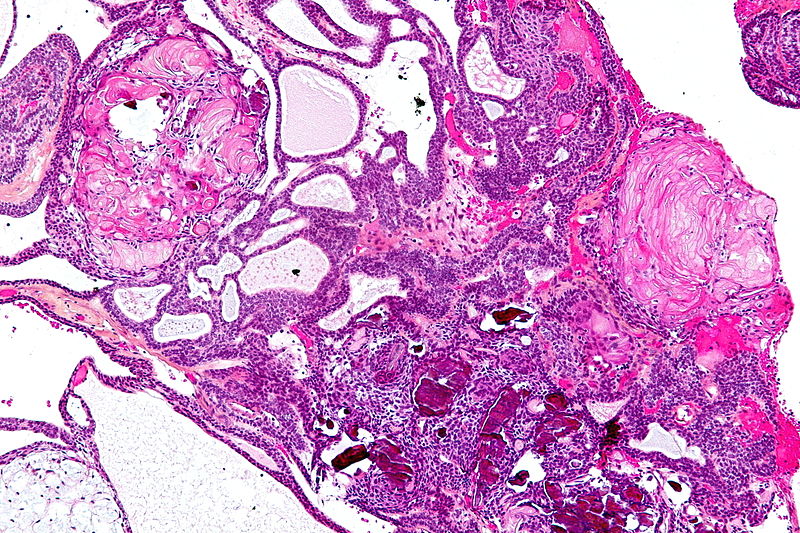Craniopharyngioma pathophysiology
|
Craniopharyngioma Microchapters |
|
Diagnosis |
|---|
|
Treatment |
|
Case Studies |
|
Craniopharyngioma pathophysiology On the Web |
|
American Roentgen Ray Society Images of Craniopharyngioma pathophysiology |
|
Risk calculators and risk factors for Craniopharyngioma pathophysiology |
Editor-In-Chief: C. Michael Gibson, M.S., M.D. [1]
Overview
Pathophysiology
They are very slow growing tumors. They arise from the cells along the pituitary stalk. They are classified as benign.[1]
Craniopharyngioma is a rare, usually suprasellar[2] neoplasm, which may be cystic, that develops from the nests of epithelium derived from Rathke's pouch.
Microscopic pathology
The histologic pattern consists of nesting of squamous epithelium bordered by radially arranged cells. It is frequently accompanied by calcium deposition and have a microscopic papillary architecture. Shown below is a micrograph showing the characteristic features of an adamantinomatous craniopharyngioma - cystic spaces, calcifications, and "wet" keratin. HPS stain.
Shown below is a Micrograph showing a papillary craniopharyngioma. HPS stain.
References
- ↑ Garrè ML, Cama A (2007). "Craniopharyngioma: modern concepts in pathogenesis and treatment". Curr. Opin. Pediatr. 19 (4): 471–9. doi:10.1097/MOP.0b013e3282495a22. PMID 17630614.
- ↑ Rodriguez FJ, Scheithauer BW, Tsunoda S, Kovacs K, Vidal S, Piepgras DG (2007). "The spectrum of malignancy in craniopharyngioma". Am. J. Surg. Pathol. 31 (7): 1020–8. doi:10.1097/PAS.0b013e31802d8a96. PMID 17592268.

